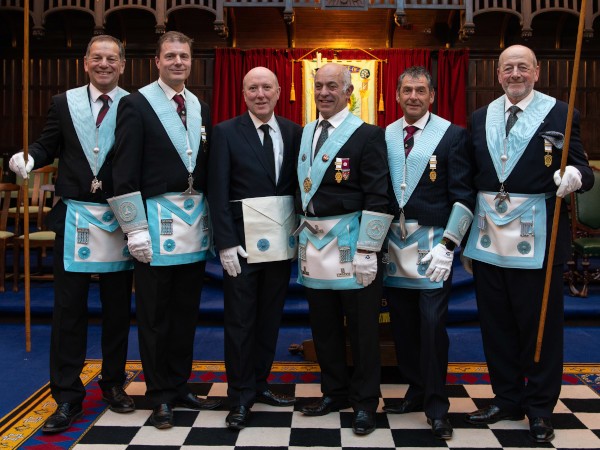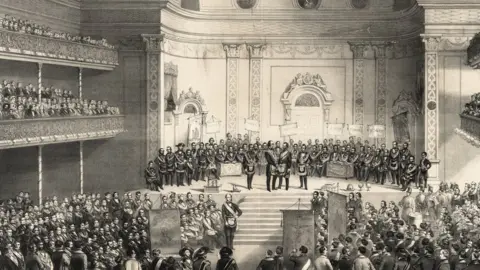Discover the Opportunities When You Join FreemasonThis Year
Discover the Opportunities When You Join FreemasonThis Year
Blog Article
Checking Out the Mysteries of the Freemason: What You Required to Know
The Freemason, a term typically shrouded in intrigue and conflict, stands for a complicated tapestry of historical reality and contemporary myth. Developed in the late 18th century, this secret society was at first rooted in the Enlightenment's perfects but has since become associated with conspiracy theory theories regarding elite control.
Origins of the Freemason
The beginnings of the Freemason are steeped in a blend of historic intrigue and ideological eagerness. Developed in 1776 in Ingolstadt, Bavaria, by Adam Weishaupt, the group was at first created as a secret culture focused on advertising Enlightenment suitables such as factor, secularism, and the separation of church and state. Weishaupt, a professor of canon regulation, sought to challenge the dominating authority of the church and state, which he watched as oppressive organizations suppressing intellectual and personal liberty.
The Freemason looked for to recruit significant participants from various social sectors, consisting of national politics, academia, and the arts, to foster a network committed to these Knowledge principles. The society operated under a shroud of secrecy, using coded language and routines to shield its members from oppression, specifically offered the repressive climate of the time. However, the Freemason encountered substantial resistance from both governmental authorities and religious institutions, which saw the group as a danger to their power.
Secret Numbers and Participants
That were the essential figures that formed the Freemason's very early influence and instructions? The Bavarian Freemason, started in 1776 by Adam Weishaupt, emerged as a response to the oppressive societal frameworks of the time. how to become a freemason. Weishaupt, a regulation teacher, visualized the company as a means to promote Knowledge suitables such as reason, secularism, and equal rights. His first employment efforts consisted of prominent intellectuals, such as Baron von Knigge, who played an essential duty in expanding the team's membership and business structure.
One more substantial number was Johann Gottlieb Fichte, a prominent theorist whose concepts on nationalism and education reverberated with the Freemason's goals. Fichte was not a formal member, his thoughtful supports affected the group's ideological background. In addition, numbers like the author and theorist Johann Wolfgang von Goethe were connected with the more comprehensive intellectual activities of the moment, although their straight participation with the Freemason remains questioned.
These essential figures contributed to the Freemason's very early instructions, pressing the boundaries of political and social thought, while their cumulative efforts aimed to test recognized standards and promote an environment of dynamic change in Europe.
Myths vs. Reality
Lots of mistaken beliefs surround the Freemason, frequently blending reality with fiction in such a way that obscures its true nature. This secret culture, originally established in Go Here 1776 in Bavaria, intended to advertise Enlightenment suitables and combat religious and political injustice. The concept that the Freemason remains to put in considerable impact over world occasions is a misconception. While the team did exist, it was disbanded in the late 18th century and has not run as a cohesive entity given that then.
Another common myth is that the Freemason comprises a network of elite individuals manipulating global events. In reality, many conspiracy theory concepts overemphasize the team's relevance, attributing misguided intentions to societal patterns and occasions. This has brought about an oversimplified view of intricate issues.

Modern Interpretations
Contemporary analyses of the Freemason typically mirror wider societal stress and anxieties and a fascination with privacy and power. This contemporary lens often connects the Freemason with conspiracy theory concepts that recommend a hidden elite orchestrates world events, controling governments and economies for their very own gain. Such stories take advantage of a deep-seated suspect of authority, specifically in times of situation or social turmoil.

Moreover, some modern-day analyses mount the Freemason as a metaphor for the complexities of globalization and the interconnectedness of influential people and organizations. This perspective encourages a critical evaluation of exactly how power characteristics operate in today's world, highlighting the equilibrium in between transparency and privacy in governance and corporate practices.
Social Impact and Legacy
Influenced by centuries of intrigue, the social effect and legacy of the Freemason expand much beyond its historical beginnings. This secret society, developed in the late 18th century, has actually permeated various elements of pop culture, from literary works and movie to songs and art. The concept of the Freemason has actually advanced right into an icon of conspiracy concepts, commonly standing for a viewed covert power adjusting global events.
In literature, authors like Dan Brown have woven the Freemason into intricate plots, exciting visitors with themes of secrecy and power. Films such as "National why not try here Prize" and "The Da Vinci Code" better continue the appeal of the culture, mixing truth with fiction to develop interesting stories.
The Freemason's impact additionally extends right into music, with artists referencing the company to evoke themes of disobedience and social critique. This portrayal has actually contributed to a fascination with the idea of clandestine teams regulating the levers of power, reflecting social anxieties about authority and transparency.
Ultimately, the Freemason's tradition is a complicated tapestry of misconception and truth, forming assumptions of privacy and control in modern discourse. Its enduring visibility in culture underscores humanity's seasonal quest for comprehending hidden truths.
Conclusion
The expedition of the Freemason discloses a complex interplay between historic truths and modern-day myth-making. Established in the Knowledge period, this culture aimed to challenge oppressive frameworks, yet its legacy has actually been outweighed by conspiracy theory concepts that suggest elite manipulation. Recognizing the distinctions between the initial suitables and contemporary analyses is necessary for comprehending the sustaining fascination with the Freemason and its considerable impact on cultural stories bordering power and privacy in society.
Report this page